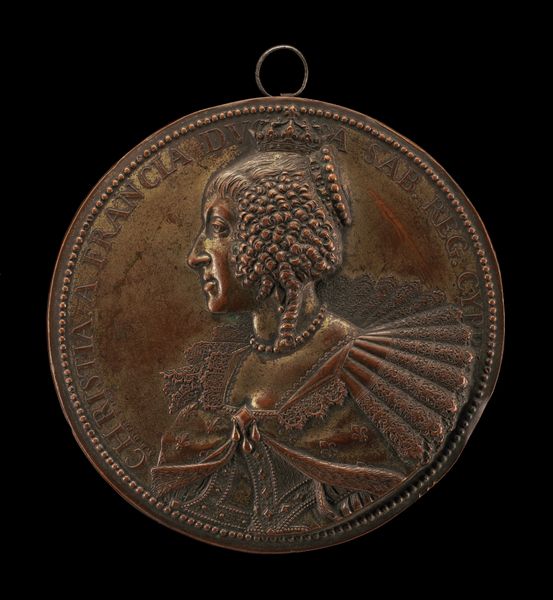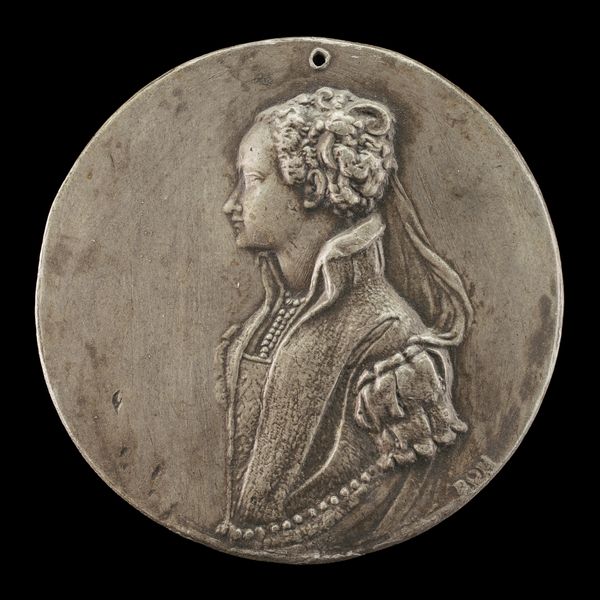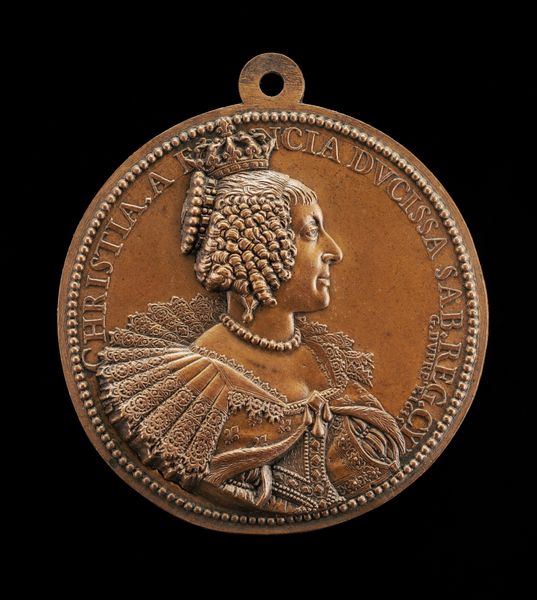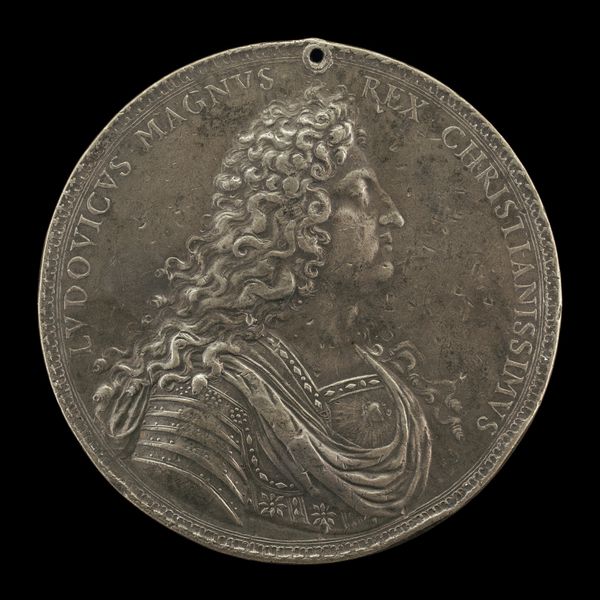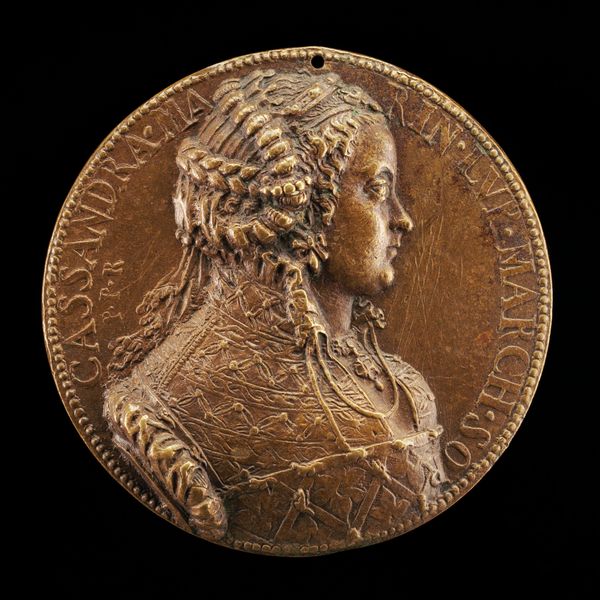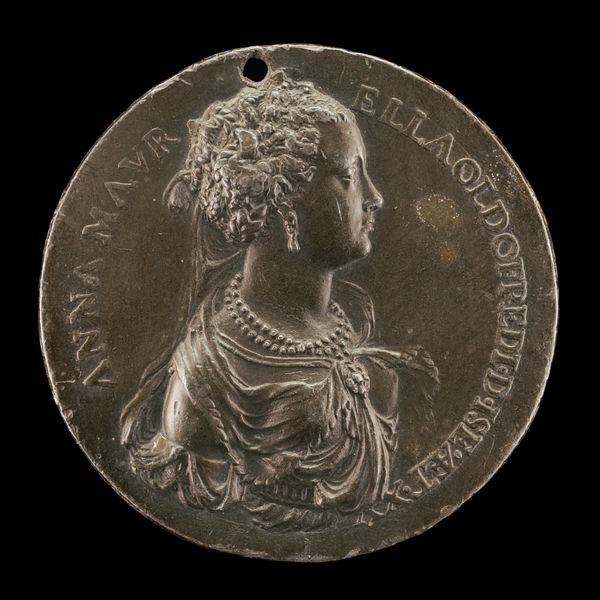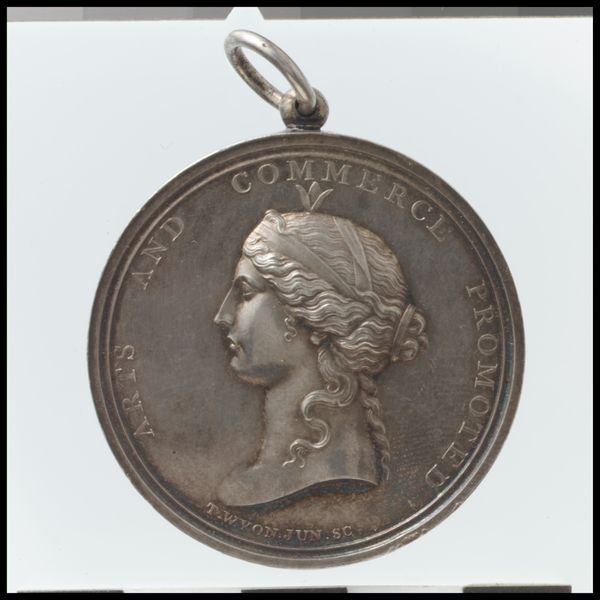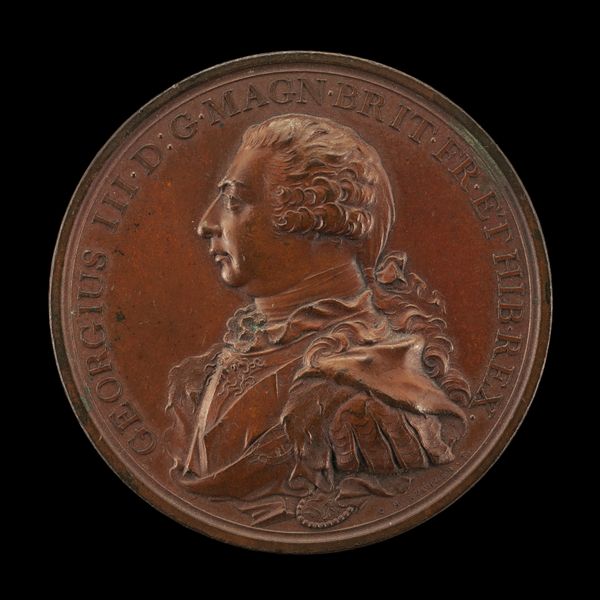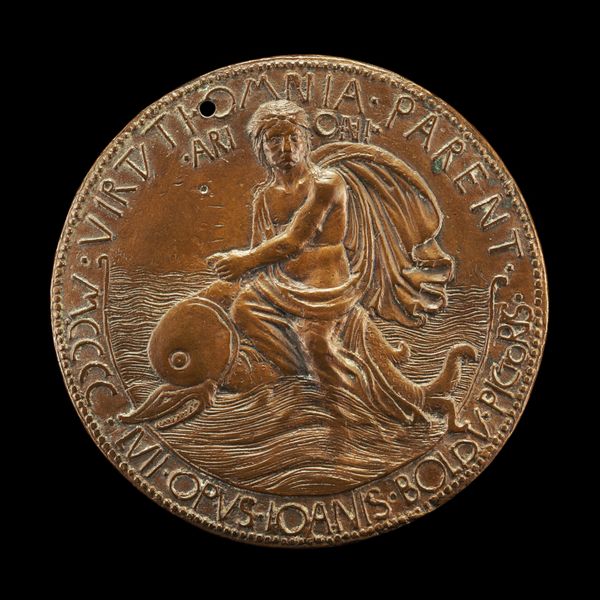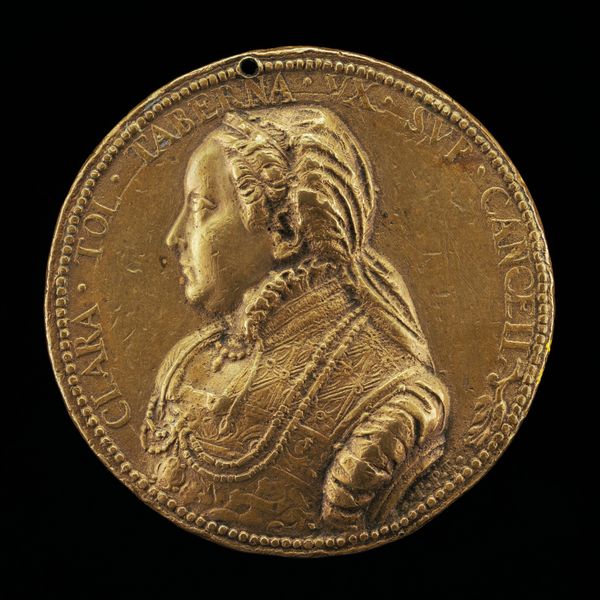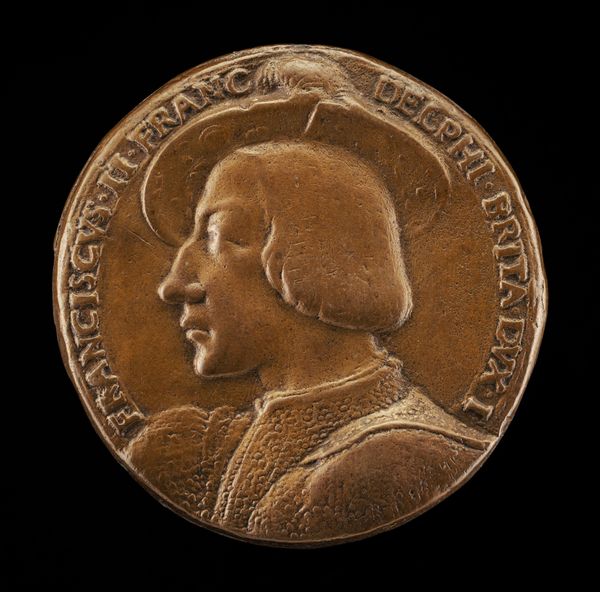![Anne of Austria, 1601-1666, Wife of King Louis XIII of France 1615 [obverse] by Jean Darmand, called Lorfelin](/_next/image?url=https%3A%2F%2Fd2w8kbdekdi1gv.cloudfront.net%2FeyJidWNrZXQiOiAiYXJ0ZXJhLWltYWdlcy1idWNrZXQiLCAia2V5IjogImFydHdvcmtzL2I3ODRiN2I2LTBiMzYtNDg2MC05NDI0LTBiODE5Nzc2MjNiZi9iNzg0YjdiNi0wYjM2LTQ4NjAtOTQyNC0wYjgxOTc3NjIzYmZfZnVsbC5qcGciLCAiZWRpdHMiOiB7InJlc2l6ZSI6IHsid2lkdGgiOiAxOTIwLCAiaGVpZ2h0IjogMTkyMCwgImZpdCI6ICJpbnNpZGUifX19&w=3840&q=75)
Anne of Austria, 1601-1666, Wife of King Louis XIII of France 1615 [obverse] 1642
0:00
0:00
relief, bronze, sculpture
#
portrait
#
medal
#
baroque
#
sculpture
#
relief
#
bronze
#
sculpture
Dimensions: overall (height with suspension loop): 5.95 cm (2 5/16 in.) overall (diameter without loop): 5.16 cm (2 1/16 in.) gross weight: 21.49 gr (0.047 lb.) axis: 12:00
Copyright: National Gallery of Art: CC0 1.0
Curator: Looking at this bronze relief medal, dating back to 1642, I’m struck by the formality of it all. Editor: Absolutely. And something in the queen’s eyes suggests there might be more to the story than pure power. She almost seems melancholy. Curator: Well, the piece is attributed to Jean Darmand, called Lorfelin, and portrays Anne of Austria, wife of King Louis XIII of France. It’s a formal portrait, designed to convey status, that's for sure. Editor: Indeed. Notice the tight composition, the way the artist uses that circular format to frame her. But what grabs me are the details worked into her dress— the depth in the folds gives so much texture to it, such a detailed pattern in there as well, the eye never quite gets to rest... It all adds up to a feeling that’s more than just stately. Almost burdened, in some way. Curator: A keen observation. Darmand has certainly created a richly detailed surface. The contrast between the smoothness of her skin and the intricate lace and the texture of her hair gives the image real depth. But formally speaking, this piece has all the hallmarks of Baroque portraiture. The way the artist uses light and shadow… it’s a sophisticated exercise in visual rhetoric. Editor: Yes, yes, I can appreciate the Baroque elements, the chiaroscuro, the semiotic weight of those symbols. But doesn’t that slightly downcast look speak more directly to Anne’s historical predicament? Remember, she was essentially a political pawn, her marriage arranged to consolidate power between France and Spain. This wasn't necessarily a position that women enjoyed! Perhaps that quiet sorrow reflects something real? Curator: Possibly! What’s interesting is how Lorfelin has handled the text around the image. ‘ANNA.AVSTRIACA.FRANC.ET.NAVAR.REGINA.’ encircles her face – essentially using her name, titles and places as a literal frame. Is that celebrating her reach, or reinforcing her place as something displayed for show? Editor: Mmm, maybe it highlights the constraints that accompanied her privilege, so the frame that appears to adorn also traps her? Curator: Food for thought indeed, next to an impressive demonstration of 17th-century bronzeworking. Editor: So beyond a queen on display and a clever sculpture, we’ve uncovered a glimpse of a woman perhaps pondering her place.
Comments
No comments
Be the first to comment and join the conversation on the ultimate creative platform.

